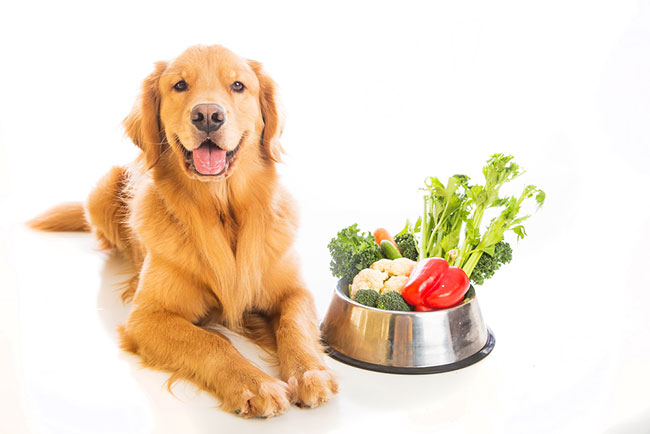
Ensuring your dog has a balanced and nutritious diet is crucial for their overall health and well-being. Proper nutrition helps maintain their energy levels, supports their immune system, and can prevent various health issues. This comprehensive guide will walk you through the steps to perfectly plan out your dog’s diet, ensuring they receive the right balance of nutrients for a healthy and happy life.
1. Understand Your Dog’s Nutritional Needs
Essential Nutrients:
- Proteins: Essential for growth, repair, and overall body function. Sources include meat, fish, eggs, and legumes.
- Fats: Provide energy and support cell function. Look for sources like fish oil, chicken fat, and flaxseed oil.
- Carbohydrates: Offer energy and aid in digestion. Good sources include grains, vegetables, and fruits.
- Vitamins and Minerals: Vital for metabolic processes and bone health. These should come from a variety of food sources to ensure a well-rounded diet.
- Water: Crucial for hydration and overall health. Ensure your dog always has access to clean, fresh water.
Life Stage Requirements:
- Puppies: Require higher protein and fat for growth and development.
- Adults: Need a balanced diet to maintain health and energy levels.
- Seniors: May require fewer calories and more fiber to support digestion and weight management.
2. Choose the Right Type of Food
Commercial Dog Food:
- Dry Kibble: Convenient and helps keep teeth clean. Ensure it is high-quality with meat as the first ingredient.
- Wet Food: Higher moisture content can be beneficial for hydration. Check for balanced nutrition and high protein content.
- Specialty Diets: Consider grain-free, limited ingredient, or breed-specific formulas if your dog has specific needs or allergies.
Homemade Diet:
- Balanced Recipes: Ensure recipes are balanced and approved by a veterinarian or pet nutritionist.
- Variety: Include a mix of proteins, carbohydrates, and vegetables to provide all necessary nutrients.
- Supplements: Add necessary vitamins and minerals to ensure a complete diet.
Raw Diet:
- Quality Ingredients: Use high-quality, human-grade meat and organic vegetables.
- Safety: Follow proper food handling and hygiene practices to prevent bacterial contamination.
- Balance: Ensure the diet includes all essential nutrients and consult with a vet to avoid deficiencies.
3. Determine the Right Portion Sizes
Calculate Caloric Needs:
- Basal Metabolic Rate (BMR): Determine your dog’s caloric needs based on their weight, age, and activity level.
- Adjust for Activity: Increase or decrease calorie intake based on your dog’s activity level and overall health.
Monitor Weight:
- Regular Weigh-Ins: Weigh your dog regularly to ensure they are maintaining a healthy weight.
- Body Condition Score: Use a body condition score chart to assess if your dog is underweight, overweight, or at an ideal weight.
4. Establish a Feeding Schedule
Consistent Timing:
- Regular Meals: Feed your dog at the same times each day to establish a routine and prevent overeating.
- Frequency: Puppies typically need 3-4 meals a day, while adults usually do well with 2 meals a day.
Portion Control:
- Measure Food: Use a measuring cup or scale to ensure you are providing the correct portion size.
- Avoid Free-Feeding: Free-feeding can lead to overeating and obesity. Stick to scheduled meals.
5. Include Healthy Treats and Snacks
Healthy Options:
- Natural Treats: Choose natural, low-calorie treats like carrot sticks, apple slices, or small pieces of lean meat.
- Commercial Treats: Opt for high-quality, low-calorie treats that complement your dog’s diet.
Moderation:
- Limit Treats: Treats should make up no more than 10% of your dog’s daily caloric intake.
- Training Rewards: Use small, healthy treats for training to avoid excess calorie consumption.
6. Monitor and Adjust the Diet
Regular Vet Check-Ups:
- Health Assessments: Regular veterinary visits are crucial to monitor your dog’s health and dietary needs.
- Diet Adjustments: Make necessary adjustments to your dog’s diet based on their health, age, and any medical conditions.
Observe Behavioral Changes:
- Energy Levels: Monitor your dog’s energy levels and adjust their diet if they seem lethargic or hyperactive.
- Skin and Coat Health: A healthy diet should result in a shiny coat and healthy skin. Consult your vet if you notice any issues.
Track Digestive Health:
- Stool Quality: Regular, firm stools indicate a healthy diet. Diarrhea or constipation may require dietary adjustments.
- Hydration: Ensure your dog stays well-hydrated, especially if feeding dry kibble.
Conclusion
Planning out your dog’s diet requires careful consideration of their nutritional needs, the type of food, portion sizes, and feeding schedule. By understanding and meeting these needs, you can ensure your dog enjoys a healthy, balanced diet that supports their overall well-being. Regular monitoring and adjustments, along with professional guidance, will help keep your furry friend happy and healthy throughout their life.



